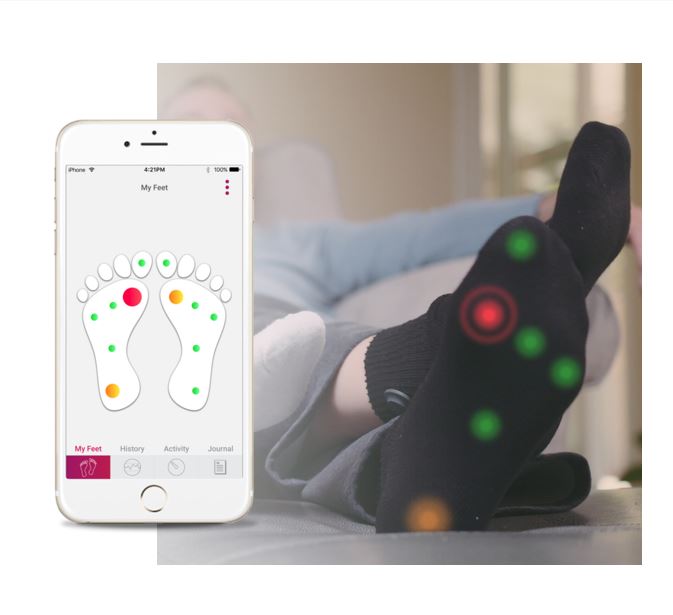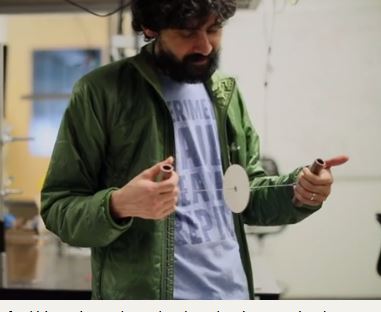The wearables trend shows no signs of abating, and for older adults suffering from chronic diseases like diabetes, a simple “smart sock” could be a lifesaver. For sufferers of both type 1 and type 2 diabetes, foot issues abound, from swelling to numbness and tingling in the toes. Unfortunately, because of the nerve damage triggered by the disease, some foot injuries go unchecked, leading to painful and dangerous complications, including infection and amputation. For older adults, these types of issues are all too common, which is why Siren Care’s Siren Smart Sock could be a game changer. “Diabetic foot ulcers are serious problem,” says Podiatric Surgeon Alexander M. Reyzelman, Co-Director for the UCSF Center for Limb Preservation, in a video about the Siren Sock. “1.5 million patients will develop foot ulcers in the United States, and 20% will develop amputations,” he warns, “and 50-70% will go on to lose their life within five years.” A Different Kind of Wearable While fitness trackers and smart watches grab the spotlight, a quiet revolution is afoot. The number of wearables designed for medical use is growing every day, especially in the senior care market. For the 11.8 million senior citizens suffering from diabetes, using test strips and blood pricks can be complicated. Because self-monitoring can be difficult for older adults, specially designed wearables can help with compliance and improve overall health by flagging small issues before they become a big crisis. Be it socks or wristbands, the simplicity of the system is one of the main advantages. “…it is simply not possible to design a device that meets the expectations of a millennial while being operable by an octogenarian,” explains Thor Schrock, developer of the Allen Band, a wristband that helps detects falls. “The most important thing to...
Low-Tech Diagnostics
Frugal Science
For caregivers in economically depressed communities, even the simplest tests can be too expensive. But thanks to the Paperfuge, spinning biological samples for testing just got a whole lot more economical. The Paperfuge allows health care workers to perform important diagnostic tests in just a few minutes, all for less than a twenty-five cents. Understanding the need to provide low-cost, and low-tech, testing and diagnosis options to the developing world, Stanford Bioengineer Manu Prakash alighted on the idea of modifying a children’s toy into a cheap, functional centrifuge. It’s all a part of Prakash’s commitment to improving healthcare across the globe by pursuing the art of Frugal Science. “To me, Frugal Science is really designing with constraints in mind,” says Prakash in a video about the Paperfuge. “When we say ‘bringing tools the masses,’ we truly do mean the billions of people on the planet.” Low Energy, High Results Traditional centrifuges are bulky, expensive and require a robust energy supply, making them almost impossible to operate in far-flung reaches of the world. A StatSpin MP centrifuge, for example, can cost thousands of dollars and runs on electricity. For many economically challenged communities, standard medical equipment is too costly and resource intensive. Prakash and his team took on the challenge of making a more accessible – and affordable – version of this valuable diagnostic tool. “We told ourselves, we can design one, but it cannot require any electricity, and it needs to be light and portable – I need to be able to carry it in my pocket – and it needs to cost less than a dollar in parts.,” explains Prakash in the video. “By boxing ourselves in with constraints, we were able to think outside the box.” The Paperfuge fits all of those...


